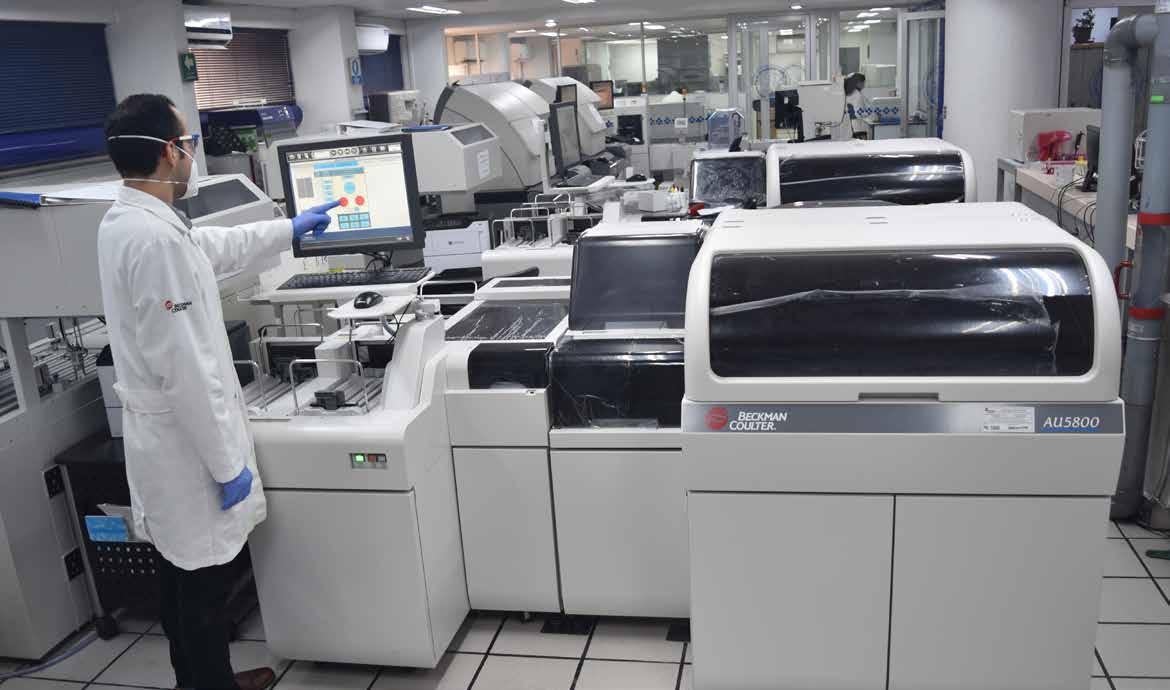
38 minute read
MedTech
6MedTech
The importance of technology in care provision took a giant leap in 2020. Medical platforms enabled doctors and patients to connect by creating a healthcare environment that was quick to respond to the needs of physicians and patients, while respecting the limitations introduced by the pandemic.
Digital tools and technological solutions, including big data, IoT, AI, the cloud, augmented and virtual reality, were already emerging trends for the healthcare industry in Mexico. However, their integration accelerated threefold as a result of COVID-19 limitations. From the daily use of wearables to track habits to complete interoperability at hospitals, medtech helped the industry to face the crisis.
Now, the challenge for medtech is to become a standard approach in care provision. In this chapter, leaders of the industry explain how technology broke the boundaries of medical performance, offering innovative ways to operate businesses, offer treatments, perform surgeries and create assertive solutions. Interviewees also address
regulatory requirements for players in this segment, cybersecurity standards, further interconnectivity between entities and ways to empower patients to take control of their health through digital tools.
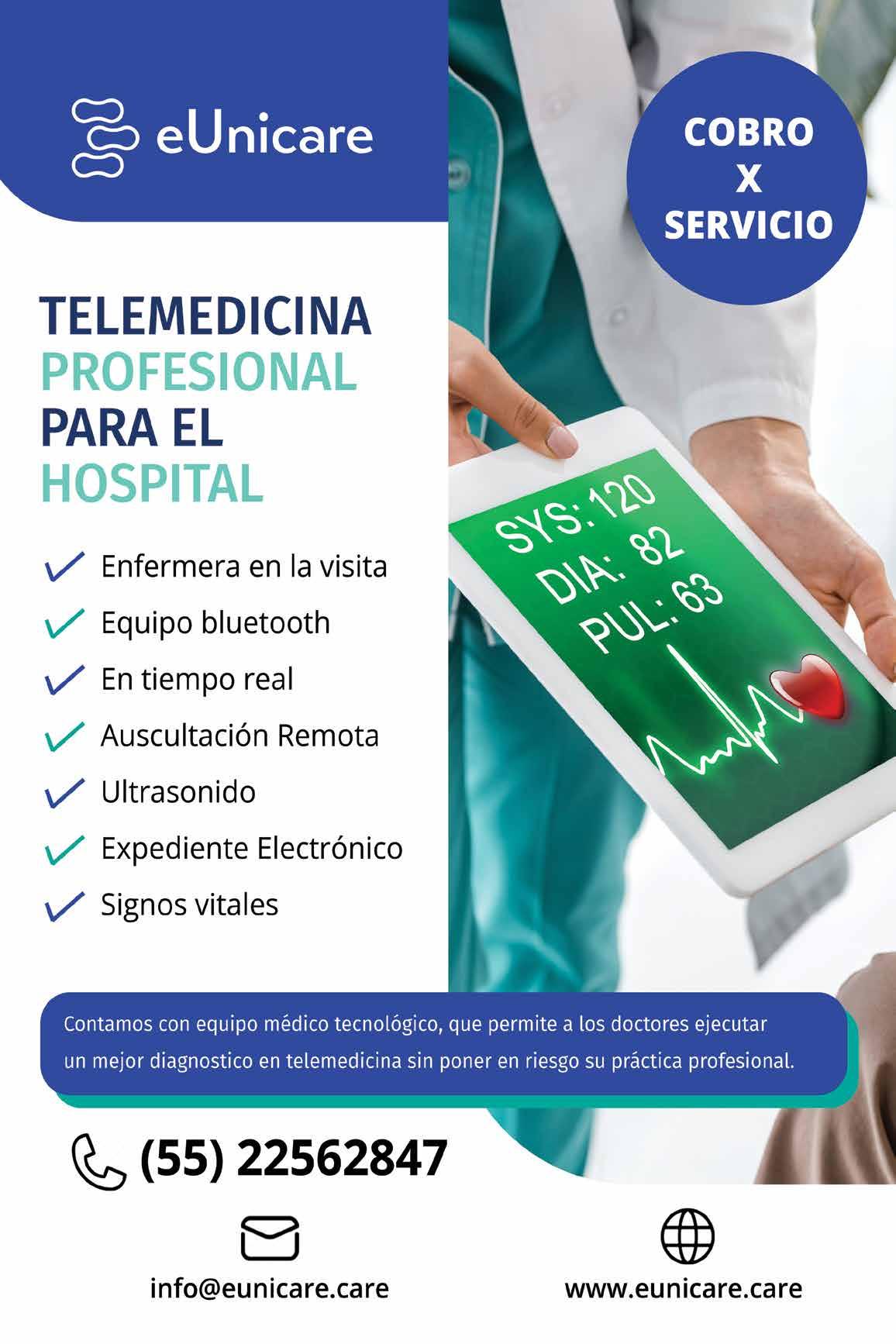
6MedTech
105 Analysis
COVID-19 Accelerates Healthcare Technology Transformation
106 Analysis
Technology Eases Hospital Burden, Enhances Health Access
107 View From the Top
Mario Muniz | Regional General Manager for North Latin America at IQVIA
108 View From the Top
Antonio Carrasco | CEO of PLM Latina
109 View From the Top
Guillaume Corpart | Managing Director of Global Health Intelligence
110 View From the Top
Ricardo Rentería | Director of AWS Mexico
111 Analysis
Redefining Preventive Health Through Technology
112 View From the Top
Juan Manuel Cáceres | CEO of Aidicare
113 View From the Top
Jorge Camargo | Co-Founder and Co-CEO of Ecaresoft
114 View From the Top
Tomás Iglesias | Founder and CEO of Osiris Healthtech Systems
115 View From the Top
Ricardo Moguel | Country Manager of Doctoralia for Mexico, Colombia and Argentina Adrián Alcántara | COO of Doctoralia for Mexico, Colombia and Argentina
116 View From the Top
Charles Nader | CEO and Co-Founder of Doc.com
117 View From the Top
Juan Camilo Garay | Country Manager of 1DOC3
118 View From the Top
Gino Scarangella | Vice President Life Sciences LATAM of Dassault Systèmes
Read the complete article Even before COVID-19, companies were embracing the digital transformation but full digitalization remained a faraway reality. The pandemic is helping to change that. Today, companies are adopting technology into their practices at an accelerated pace to ensure business continuity following global lockdowns.
The same is true in the healthcare sector, where technology trends are having an impact on care provision. “Technologies that increase patient security are among the strongest trends as they provide clinical excellence and facilitate communication with providers and consumers,” said Roberto Aguilera, Health Sciences and Wellness Consulting Partner at EY, in an interview with MBN.
Telemedicine is one of the tools that quickly accelerated its market penetration. “Before the pandemic, 64 percent of doctors were not planning, in the near future, to introduce virtual consultations or digital check-ups nor to use voicecontrolled digital assistants. Our survey indicated that around 60 to 80 percent of doctors were now very open or willing to incorporate new technologies into their practices,” said Aguilera.
In addition to incorporating a telemedicine platform, Aguilera recommends hospitals to digitalize their practices, too. “Hospital staff experiences an improvement in their productivity and in the long run, patients also experience the benefits because they are able to receive more personalized and appropriate attention.”
To make digitalization a reality, a broad alliance of players is required, explains Enrique Remezal, CEO of icon Group. “This involves the creation of a whole network of people: patients, medical professionals and providers. Creating a digital environment involves a great deal of management to allow the whole community to coexist and ensure the efficiency and safety of the hospital’s services.”
In Mexico, Médica Sur is among those diving into the digital transformation experience. “We have partnered with technology groups that allow us to develop our own software and robots that help diminish risks for patients and doctors at Médica Sur,” Misael Uribe, President of Médica Sur, told MBN. “We are consolidating a super safe hospital where you can go for treatment without fear of any kind. This is especially important now that we are facing a pandemic and safety inside the hospital is key to avoid further contagion.”
Improving performance throughout the whole healthcare chain with the help of technology is becoming increasingly important. “What we are seeing now is that many companies are interested in combining their service offering with digital tools that will add value to their offering,” said Andrés Gavenda, North Latin America Health Sciences and Wellness Industry Leader at EY. “They all have to hyper automate their process and start thinking about solutions that use artificial intelligence. With the use of robots, we can improve productivity in all industries, save time and focus on other matters that require specific attention.”
Read the complete article The demonstrated benefits of technology and digitalization have driven countries to develop their own apps to trace COVID-19 contagion or to try to keep people at home when presenting slight health discomfort or mild COVID-19 symptoms. And for good reason: Amid the pandemic and given the number of people who live in the Mexico City metropolitan area, hospital capacity could be severely threatened if people throng to the emergency room. As one of the world’s biggest cities, size alone presented a daunting hurdle for Mexico City in terms of its response to the crisis, according to Oliva López, Minister of Health of Mexico City, in an interview with MBN. Here, too, technology has come into play, although López explained that while technology is almost all around the capital, a single app was not enough to reach all citizens.
As a result, the ministry created an additional tool that could complement the existing apps that the federal government launched with information on COVID-19 symptoms. “The Digital Public Innovation Agency contributed greatly by creating a text message option to filter patients with mild symptoms and encourage them to stay home, allowing SEDESA to offer telephone follow-ups and to provide general recommendations regarding isolation for suspicious cases,” she said. López added that the text message method also allowed the ministry to identify delicate cases linked to other morbidities to encourage patients to go to the hospital or more carefully monitor their symptoms.
Chile has also taken advantage of technology to better face the pandemic. Alongside EY, the government developed a digital solution that allows remote guidance through an app. In an interview with MBN, Roberto Aguilera, Health and Life Sciences Advisory Leader at EY Latam North, explained how it works. “Through artificial intelligence, the app detects possible COVID-19 cases as Chilean users are asked to fill in a survey about their current health status. When detecting a case, the app is able to provide digital consultations with a doctor to confirm if the person is COVID-19-positive.” According to Aguilera, the app has elevated COVID-19 testing in Chile and has also resulted in more manageable flows of patients, who cannot visit a medical facility without previous digital approval to do so.
For a more in-depth understanding of the impact and helpfulness of technology during the COVID-19 crisis, Ricardo Renteria, Sales Management Enterprise Lead Amazon Web Services, told MBN that the company developed a service called AWS Diagnostic Development Initiative, which is a supporting tool for companies. “This program supports customers working on better, more accurate diagnostic solutions and promotes better collaboration across organizations solving similar problems.”
In Mexico, the company developed a project alongside a client company called Roomie IT Services. “This is the first and only 100 percent Mexican organization to develop, produce and sell humanoid robotics in Mexico which, in collaboration with infectious disease experts, designed a prototype robot whose purpose is to identify suspicious cases of COVID-19.”
Mario Muniz
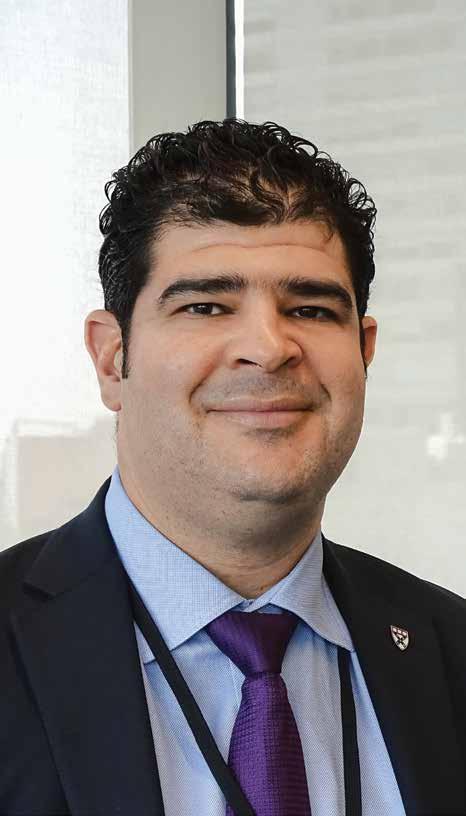
Standardized Data System First Step To Digitalizing Health System
Read the complete article
More about this person Q: What role has IQVIA played in the pandemic?
A: IQVia has provided valuable information to CEOs in Mexico. During the pandemic, we did more than 20 webinars divided into two groups. One was called The Thought Leadership, where our experts addressed some of the topics of greatest interest and impact at the time, such as digitalization in the pharmaceutical industry, what will happen with the use of technology and projections for market growth.
We are a unique company in the sector due to our size and our wide range of solutions for the pharmaceutical industry, from clinical to commercial.
Q: What were IQVia’s most in-demand solutions in 2020?
A: There are three groups of solutions that grew considerably in 2020: everything that has to do with digitalization and the implementation of technology platforms and the deployment of virtual campaigns and consulting together with market research. Our clients want to know what doctors are thinking, what the position of the laboratories is during the pandemic and who is perceived as the most ethical or the most helpful player, for example.
Q: What obstacles does the health sector in the country face regarding new technologies?
A: Regulation is the first hurdle. We are completely lagging behind in establishing regulation that is transparent but at the same time contemplates all the necessary aspects involved. There is little technology promotion in the country for the health sector. If we compare ourselves to other Latin American countries like Brazil, we are at a great disadvantage.
Meanwhile, in Mexico, everyone in the industry has to fend for themselves. Even though there are already telemedicine companies operating in the country, there is a need for standardization to allow the general market to benefit during this crisis. We are losing a lot of time because we do not have the appropriate regulation.
Q: What possibilities does AI open up in the health sector?
A: AI and machine learning do not exist without solid databases. The big barrier in the country is developing homogeneous databases that communicate with each other, allowing for data analysis. In Mexico, the health system is fragmented and it is difficult to connect the databases in the public and private sectors. One day a patient may go to one place, the next day they might go to another and their medical record is traceable, nor uniform.
Without a standardized database, however, we are limited to take full advantage of these tools for the benefit of patients. At the moment, the government is busy with keeping the health sector operating and providing medicine at the lowest cost. When we meet with members of the government and show them our data and analysis, they are amazed but they should already have the information because they are the ones who are purchasing all the medicines. The government’s approach in Mexico is not designed to analyze but to only provide healthcare, at the lowest cost possible.
Antonio Carrasco

CEO of PLM Latina
The Goal Is to Read the Doctor’s Mind
Read the complete article
More about this person Q: Last year, PLM Latina (PLM) talked about starting a project with the Amazon virtual assistant Alexa called Salud PLM. Where do you stand with this project?
A: The project is gradually advancing and we expect its use will explode soon. We have been working to improve the digitals tools in our applications and on the web, as well as APIs for third parties. We make improvements according to the demands of our clients, who want to be able to place messages about their products in very specific places. We help them by collecting intent data, which tells us what doctors do when they search for medications and prescribe them. This allows us to place product messages at the moment when the doctor is going to make the decision.
Q: What is your perspective on health marketing?
A: High-level professional audiences search and find information for their decision-making process. In the journey to fulfill their inquiries, physicians, for example, investigate and respond their prescription doubts with the content provided by databases, web services and digital media. Just in 2019, PLM’s digital media reached over 700,000 health professionals with more than 90 million views. This amount of data, bounded by a particular content domain and specific audience, has been demonstrated the correlation between drug sales and inquiries in PLM’s services, as all searches are brand correlated.
Concretely, PLM’s intent data brings market knowledge of brand awareness, market share and, most importantly, who is the critical audience to look for to change the market share composition. Furthermore, in the patient’s market, for example, PLM holds real-time intent data of organic searches on the web by millions of patients looking for a more precise understanding of their prescription. That set of intent data, for marketing purposes, is the real-time description of the pharmaceutical market distribution by the brand that allows effective and efficient marketing campaigns over the frequent use of data whispering in social media.
Q: As the infrastructure of technology expands, will company’s like pharmaceuticals develop their own software for intent data?
A: Yes, technologies such as cloud computing are very democratic and there are essentially no limits. Companies will develop their own technology. For this reason, we need to be attentive to what services can disappear and always be attentive of new innovations. What matters is creating the capacity to integrate the largest amount of information. You then need to bring this to clients in a manner in which they can see how they can benefit.
We break up the information we collect according to target groups. Generally speaking, we see that this industry, unlike others, is generally slow in adopting technology. There is a high level of regulation that is dampening the spirit of innovation and risk-taking. The transfer of technology greatly depends on the number of people who know about natural language processing. In Mexico, there are about three people who know this very well. However, this represents growth because five years ago there were none. One of the ways in which large businesses can attain a technological footprint is by acquiring smaller digital platforms. Mergers can also effectively accelerate the adoption of technology in Mexico. Ultimately, intent data is highly useful and its potential is great.
Guillaume Corpart
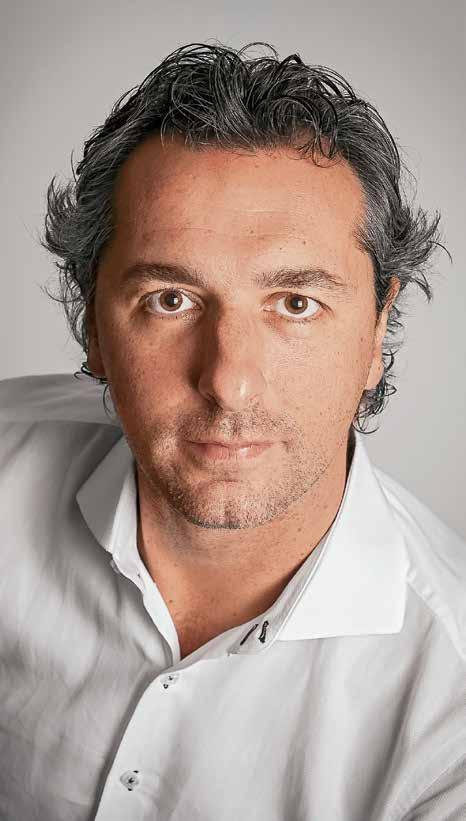
Managing Director of Global Health Intelligence
Data Necessary to Make Better Decisions
Read the complete article
More about this person Q: How have you advanced in developing products to support your clients based on their size and market participation?
A: We have two unique products. The first is HospiScope, which contains information about hospital infrastructure, and the second is SurgiScope, which analyzes hospital procedures. HospiScope lets users understand the capacity of each hospital as it permits to know the number beds, operating rooms, delivery rooms, X-ray machines, MRI-scanners, etc. SurgiScope, meanwhile, collects data on the number of procedures for every hospital, such as appendix removals or knee surgeries. In 2017, we redesigned both platforms to make them more robust and streamlined. We also launched tools, including HospiCheck and HospiVista, to allow clients to search these databases in an accessible and tailored way. Our information related to medical devices and medical supplies remains our core business.
Q: What is the advantage clients gain from using Global Health Intelligence’s systems?
A: A large part of what we do is to give companies the confidence to make better decisions. They want to increase their understanding of the market, identify opportunities and target specific clients. To guarantee good solutions for our clients takes a lot of work. We partner with our clients to achieve this.
Q: How would you describe the state of the health sector in Mexico in terms of infrastructure and equipment?
A: There are approximately 22,000 hospitals across Latin America with almost a million beds region-wide, resulting on a region average of 45 beds per hospital. While this average holds true in Mexico, private Mexican hospitals only have 13 beds. Hospitals of a small size, very common in Mexico, are less likely to invest in equipment that is capital intensive, such as surgical robots, CT-scanners or MRI-scanners that can cost US$1 million or more. If you sell capital-intensive equipment, which is usually sold to hospitals with over 200 beds, there are about 185 hospitals in Mexico that are potential clients. This is a big issue.
Many manufacturers also have been questioning the public sector direction under the current government. Sales have seen a rapid contraction over the last year and a half, between 25 and 50 percent. Some clients have seen their sales for specific business units go from US$5 million to US$4 million almost overnight. This is terrible.
Q: What competitive advantage do Mexican hospitals offer?
A: Many public hospitals are renowned. However, they are oversaturated. Mexico needs to have a more efficient healthcare system in order to improve the quality of care. In the private sector, there are very good hospitals. One of the achievements in Mexico is that we have been able to make expensive procedures more accessible to lower socioeconomic classes through short-stay surgery and better use of infrastructure. However, the distribution of resources available per capita still remains low, even compared to the Latin American average.
Ricardo Rentería

Director of AWS Mexico
A Digital Partner Able to Transform the Sector
Read the complete article
More about this person Q: What actions is AWS taking with healthcare providers, public health agencies, government corporations and life sciences companies to support their efforts to control COVID-19?
A: We launched the AWS Diagnostic Development Initiative, a program to support customers working on better, more accurate diagnostic solutions and promote better collaboration across organizations solving similar problems. As part of this, we are committing an initial investment of US$20 million to accelerate diagnostic research, innovation and development to speed our collective understanding and detection of COVID-19. The AWS Diagnostic Development Initiative begins with participation from 35 global research institutions, startups and businesses focused on tackling this challenge.
In Mexico, Roomie IT Services is one of our customers using AWS tools: the first and only 100 percent Mexican organization to develop, produce and sell humanoid robotics in Mexico which, in collaboration with infectious disease experts, designed a prototype robot whose purpose is to identify suspicious cases of COVID-19. With AWS software, the main objective of the robot is to protect medical staff and patients and prevent the spread of infection. It strengthens the health system at the height of the pandemic, acting as a first point of contact in hospitals. It is important to point out that the robot identifies suspicious cases but does not diagnose them, so it does not replace doctors.
Another great case is NEORIS, a digital accelerator that creates disruptive solutions for businesses with digital aspirations to boost their connections with customers, employees and stakeholders. In response to the COVID-19 pandemic, it has expanded the capabilities of its HealthCheck platform to support the efforts of businesses and governments to reopen operations in multiple countries and slowly become productive again.
Q: What added value does AWS’ solutions deliver to the healthcare sector?
A: The AWS cloud plays a significant role in how this sector innovates. Without AWS, there might be fewer prescription drug breakthroughs widely available, for instance. Today, the American Heart Association is building a precision medicine platform on AWS to aggregate and analyze data that will help researchers uncover cardiovascular disease insights. Similarly, the Cancer Genome Atlas dataset has made its data available on the AWS cloud, lowering entry barriers for researchers working on developing new treatments for cancer.
Using AWS, AstraZeneca is enabling scientists to identify more patients with actionable cancer types, to develop medicines faster and to treat more patients sooner. GRAIL, Inc. is combining high-intensity genomic sequencing with modern data science techniques to transform the way cancer is diagnosed. SkinVision offers affordable detection of skin cancer, one of the fastestgrowing diseases in the world.
AWS also has a direct impact on improvements in patient care. Arterys is revolutionizing medical imaging and healthcare through ultra-fast cloud computing, advanced visualization and deep learning. Qventus is using AWS for machine learning and analytics to help hospitals to identify bottlenecks and improve efficiencies in the emergency room, operating room and pharmacies.
Redefining Preventive Health Through Technology
Read the complete article Mexico’s health system faces numerous hurdles, including rising costs and a fractured structure, but the lack of a culture of prevention is among its biggest drawbacks, according to Graciela Teruel, Director of EQUIDE. “Mexico’s lack of sufficient emphasis on preventive healthcare might be the largest one,” she told MBN when asked what was the industry’s major deficiency.
While COVID-19 has had tragic consequences, the pandemic also has helped redefine preventive healthcare. Experts such as Patrick Devlyn, President of the Health Commission at CCE, have urged the country to move from a curative to a preventive model in the wake of the virus. “The first pillar for transforming the sector after COVID-19 is the implementation of an integral public health policy on prevention to create and encourage a preventive healthcare culture,” Devlyn told MBN.
To this end, technology can play a significant role. Both startups and multinational giants in the industry have developed technological tools to encourage and track healthy habits, while at the same time developing personalized solutions that can help people adopt a healthier lifestyle. “Health, disease and disability are dynamic processes in an individual’s lifespan and therefore preventive healthcare must be equally dynamic,” says an APPT study that highlights three concerns regarding healthcare complications and developing a healthy lifestyle:
1. Preventive healthcare promotes individual well-being and happiness because it raises self-awareness regarding people’s bodies and enhances all capabilities for them to function in the best way possible. Individuals live longer with less ailments, which prevents them from experiencing physical pain. 2. It boosts the economy as healthy people are more productive. A healthier population means more people employed and working productively. 3. Reduces the pressure on healthcare services. Mexico is a prime example; the country has an obesity epidemic that cost MX$240 billion (US$12.43 billion) just in 2017 and is now linked to the three main mortality causes: heart disease, diabetes mellitus and malignant tumors.
Today, technological developments allow people have greater control of their health habits and track their lifestyle regarding exercise, meals, moods and emotional health. MBN interviewed companies that have developed apps that help the user to be aware of their habits through smartphones. Among them, KALMY, a digital broker for health insurance, has developed an interesting dynamic to promote health and incentivize people to keep healthy lifestyles. According to CEO Emmanuelle Brunet, “given that the whole purpose of the app is to promote a healthier lifestyle, we have a section that automatically registers habits and lifestyle characteristics and displays a progress bar that indicates improvements, which will also unlock benefits that could include discounts at healthy restaurants or movie tickets.”
Habits.ai is a corporate health-management app that, according to CEO José Antonio Torres, is “a combination of artificial intelligence, behavioral change and gamification. For companies, the gamify component is key because company employees are constantly competing and thus changing their habits.”
Juan Manuel Cáceres
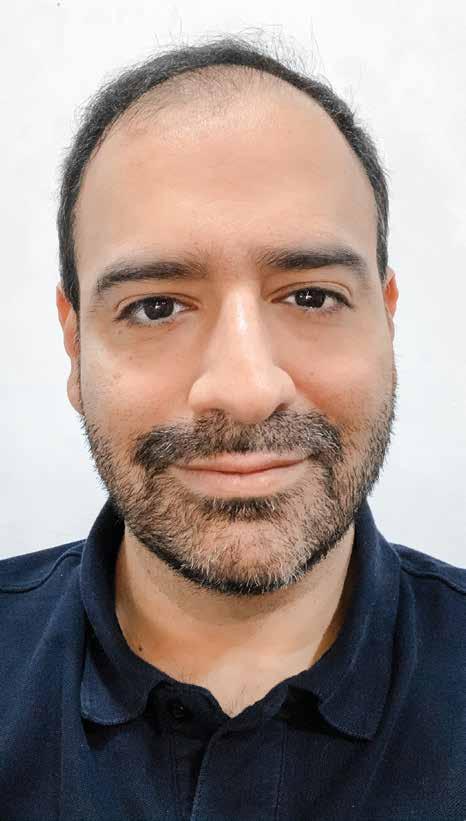
CEO of Aidicare
Creating a Technological Environment at Medical Facilities
Read the complete article
More about this person Q: Why is Aidicare’s technological approach to healthcare the best solution for patients and hospitals?
A: Aidicare wants to improve people’s quality of life but also ensure safety during their hospital visits, which is why we offer one service for the individual user and another for hospitals. Aidicare transforms technological innovation into a useful and beneficial service for the patient. The company started four years ago and we are now present in Miami, London and Mexico. Our goal is to respect the hospital’s structure while smoothly digitalizing its practices, not to disrupt its way of working.
Our first service, Aidicare Life, is designed to help patients care for their health outside the hospital through a wearable and an app that track the person’s vital signs, including sleep patterns, physical activity, daily steps, weight control, glucose control, heart rate, blood pressure, oximetry and temperature. The wearable allows us to keep track of certain aspects, while elements such as temperature or weight can be submitted through other devices that can connect to the app, which also are available for purchase through Aidicare.
To connect this information with a doctor and offer a complete healthcare service, Aidicare also provides a digital board where doctors can keep track of the patient’s health. The objective is to provide doctors with a clear view of the patient’s lifestyle, habits and health status, which also trims around 35 minutes from the consult. This customized solution using AI algorithms allows for a precise diagnosis and better advice for a healthier lifestyle.
The Aidicare Hospital solution targets patients who are in the ICU or have just come out surgery. It uses a tablet to track vital signs and alert medical staff of any changes in the patient’s condition. Through the use of AI, Aidicare offers facial recognition of the patient before entering the ICU or before surgery, which is possible through a partnership with Amazon. The objective of this development is to avoid any misdiagnosis or use of a wrong clinical record. Aidicare can also complete necessary forms used by nurses with the information gathered through the patient’s wearable. At Medica Sur, around 60 percent of doctors use this digitalized concept, which has also diminished their use of paper due to the digital connection to the patient electronic clinical record. Aidicare has also received guidance at technology competitions organized by Endeavor and Prosible that have helped the company to perfect its products.
Q: How has COVID-19 impacted the way your company works?
A: Our services have been boosted because technology is driving the healthcare sector right now. With the pandemic, Aidicare was able to develop and run the hospital service for insurers and we have also created a product called Torre Medica Virtual to enable hospitals to correctly use telemedicine. This product is a platform for hospitals to provide the same services they usually offer but digitally. This is a personalized solution that maintains the hospital’s institutionalized concepts. The platform adapts to their concept, themed colors, options and services, and it includes a scheduling system to book consultations and offer teleconferences.
Jorge Camargo
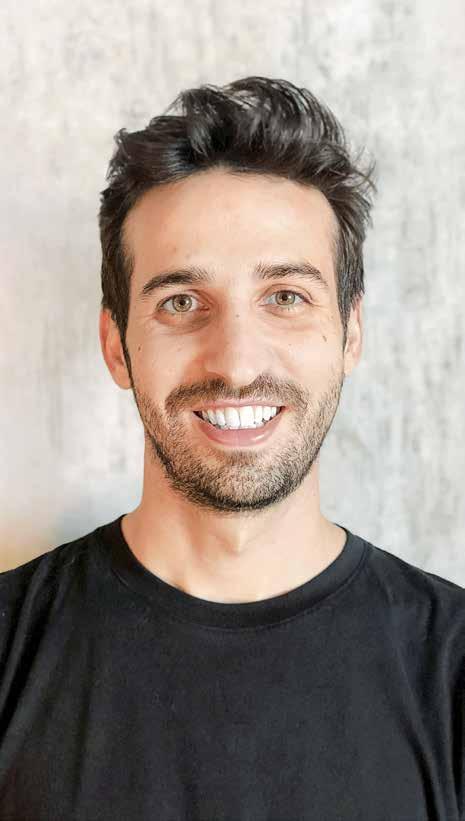
Co-Founder and Co-CEO of Ecaresoft
Buildable, Flexible Products Escalate Business
Read the complete article
More about this person Q: How will the Cirrus platform transform as a result of the COVID-19 pandemic?
A: Cirrus is a horizontal solution that takes care of every process in a hospital. It helps to manage patient admission, medical records, patient notes and process and prescriptions. It is also involved in inventory management, purchases, accounts receivable and stocks. The main differentiator of this solution is how it integrates clinical processes and their administrative and financial counterparts into a single platform. The system brings together all patient information during their stay, from prescriptions to their bill. As a result, hospitals can have a complete follow-up of each case. The platform works in seven levels, each gathering more information. Once in level seven, hospitals will be fully automated, with interconnected areas.
With the pandemic, non-urgent surgeries were being canceled, as were regular consultations with a doctor. This significant decrease pushed us toward the telemedicine idea we had already been dabbling into with our product Nimbo but that was not fully introduced in Cirrus, yet.
Q: How does Cirrus adapt to each hospital’s particularities?
A: We first start with an analysis of the hospital to detect how it works and what is effective about its practices. Next, we work alongside management to create a solution. Not all hospitals have the same ability to adapt to a cookie-cutter product. While the software works the same for all of them, hospitals will not always have or share the same processes.
Q: How are you positioning Nimbo among smaller clinics and private practices?
A: Nimbo has developed from its initial purpose of helping primary care clinics more easily manage their operations. It was a scheduling solution with electronic clinical records. Now, it is a platform with different products that helps build a clinic’s online reputation, from website to brand. Once the patient finds the doctor, we support them with a digital appointment, which offers the option of telemedicine. Through Nimbo, a clinical electronic record of the patient is created to also allow for a proper follow-up. Through Nimbo, primary care clinics can have the option of a fully digital service.
This platform has been very successful, experiencing growth of around 130 percent every year. To date, the platform is being used in 25 countries, with around 500 to 1,000 clients. It offers the opportunity to grow its platform constantly, whereas Cirrus takes longer to mature as the solution is based on levels and connection on information. However, this has pushed us to look for more markets in Latin America to introduce Cirrus.
Q: What is your marketing strategy as a company?
A: We have understood that to grow and succeed as a business, the products and the company itself need to be flexible. All products that we offer need to be buildable and able to adapt to different contexts. They are not fully personalized because that would not make them scalable. However, they can build up, instead of changing the whole basis of the core product.
Tomás Iglesias
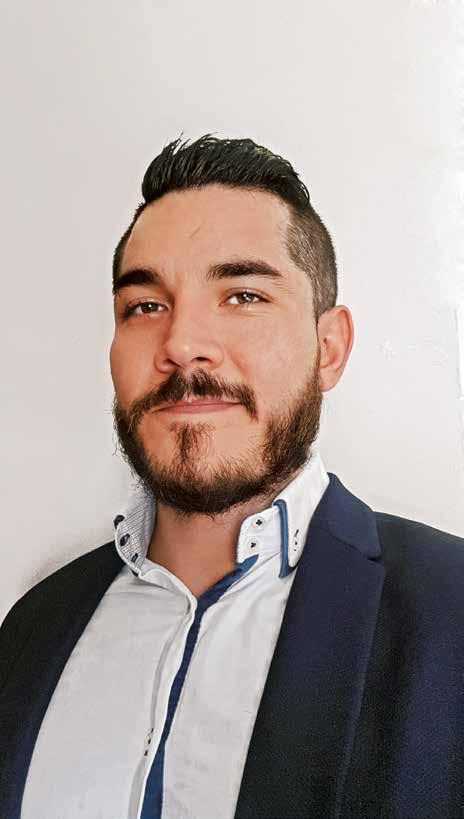
Founder and CEO of Osiris Healthtech Systems
Technology a Major Ally in Addressing COVID-19 Crisis
Read the complete article
More about this person Q: How is Osiris Healthtech Systems’ responding to the needs of care providers in the emerging digital healthcare environment?
A: In early 2019, we launched OMI statistics. This tool is basically an electronic clinical record that can translate information into a visual report for decision-makers. At the end of last year, by studying the market’s response and listening to feedback from end-users, there were three main points brought to our attention. The first was charging for queries sent through instant messaging services, like WhatsApp or Messenger. Most people do not understand that having the ability to answer a medical query, even with a text message, requires many years of study, which comes at a cost. The second area of concern for doctors was the cancellation of medical appointments. Before the digital acceleration, it was normal for 40 to 50 percent of patients to miss their medical appointments. With these digital tools, doctors wanted to measure the level of cancellations. Now, our platform has a system that allows them to see who canceled and their cancellation rate. Third, doctors want to attract more patients. To address this, we analyzed the market to create a tool that a person would use every day like Uber or Rappi. Through agreements, we will also offer additional benefits to our clients.
Q: How did you develop a functional platform?
A: Before the pandemic hit, we were creating a platform for confirming and canceling appointments. However, when the COVID-19 crisis began, we saw that many hospitals, clinics and doctors were making an effort to develop their own software to close the patient connection gap. Most of our clients had to close their offices temporarily or permanently.
We decided to create a platform together with a group of doctors from Colegio de Medicina Interna del Noreste. We concluded that the best approach was to create a tool that would prevent patients from going to the hospital to see if they had COVID-19. After six days from starting, we took the prototype to friends and family. However, eight days after we began the development and had the platform ready to launch the government announced and launched its COVID-19 digital platform. We monitored their launch and noticed that many people resisted it because it asked for too much personal data. We decided to make adjustments to let people use our platform anonymously and then launched some hours after. One day after its launch, we had more than 200,000 users in 15 countries.
Q: What were the main challenges in launching this platform?
A: It was no longer just an app for checking if people were infected but one where patients were seeking medical advice as well. Realizing this, we formed an alliance with various telemedicine platforms, such as Wellmedic to offer the option of telemedicine through the platform. It was such a success that telemedicine allies were able to conduct 2,500 remote consultations a day and we reached a million users a week after the app’s launch. The tool quickly became an international hub for COVID-19 patients. Within three weeks of its launch, we were present in more than 100 countries. As of today, our digital platform has been used by 3.3 million people in 192 countries, and we were awarded with a state award for creating a digital tool with global impact. For this development we received Premio Tecnos 4.0 Nuevo León.
Ricardo Moguel
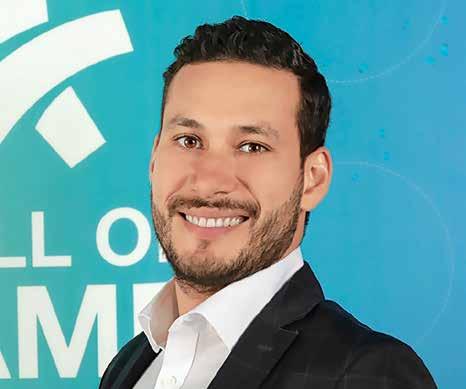
Adrián Alcántara

A Healthcare Ecosystem at Your Fingertips
Read the complete article Q: How did Doctoralia become the largest healthcare platform in the market?
RM: Doctoralia began as a marketplace that links doctors with patients. Our goal was to help doctors make more efficient use of their time by generating online demand managed through a digital schedule. To date, we have developed other technological solutions for the healthcare chain to build an entire healthcare ecosystem within the same platform.
What enabled us to become the largest healthcare platform in the world is our extensive network of doctors in every country where we are present. Doctoralia Mexico has around 180,000 doctors registered on the platform and, at least in Mexico, we arrange more than 1 million medical consultations per month and have around 4-5 million people looking for a doctor per month.
AA: Doctoralia’s goal is to make healthcare more human. In the past, technology was seen as a detachment between doctors and patients. After the pandemic, this scenario changed when people realized that technology could get patients closer to a doctor despite mobility limitations.
Q: How has Doctoralia grown its doctor userbase in Mexico?
AA: Doctoralia took advantage of the fact that people always go to the internet to look up their heath symptoms. We took this and transformed it into a tool that provided answers to healthcare questions from a doctor’s perspective.
Q: How do clinics and hospitals participate in Doctoralia?
RM: We created a solution for clinics that digitally supports scheduling to make the most of their collaborators’ time and infrastructure. The approach with hospitals was different because they already invest in technology to improve their performance in all senses. To offer a true value proposition, Doctoralia acquired an Italian company called Tuo-Tempo, which allows us to manage and customize patient files, from the moment the patient arrives in the hospital to the end of their treatment. Moreover, we build white label apps for each hospital so they can complement their digital offering.
AA: We created a solution for laboratories that originated from patients’ needs. Lab Doctoralia offers a quick glance at the services and requirements of each laboratory. To date, we have allied with large and local laboratories.
Q: What impact has telemedicine had on your platform?
RM: COVID-19 accelerated the development of a tool that we had already pictured for the near future. Telemedicine cannot be an option for all medical specialties, however. For some, it can only act as the first point of contact but for others it can be a recurrent attention method.
Doctoralia has arranged more than 250,000 medical consultations since its launch date in March and through this experience we have seen how this method breaks geographic barriers. We are complementing our telemedicine offer with a digital prescription service. To date, through Doctoralia, doctors have issued more than 3,200 digital prescriptions.
Charles Nader

CEO and Co-Founder of Doc.com
Technology Can Help Provide Universal Healthcare
Read the complete article
More about this person Q: How have you optimized the Doc.com platform to make it more user-friendly?
A: We consolidated our two services in the same app, which increases the functionality of both. Now, patients have the option to speak to a doctor or psychologist directly via chat, with fewer restrictions and using only half the bandwidth, which makes the platform a faster download. In the US, we have a contract with TracFone Wireless, which is integrating our services to its telephone plans for half of its users.
We also optimized our classification system for epidemiological disease information, which is the core of what Doc.com does and what makes it possible for us to offer cheaper services. We classify scientific data based on relevance, according to international standards. In terms of price, we are the cheapest healthcare service in the US, even considering our first version of the platform.
Q: How has Doc.com’s client base evolved?
A: Doc.com is available for free to those who cannot afford it. However, the premium version is the most complete. More than 50 percent of our users are from Mexico and the rest are from Latin America.
In terms of doctors, we have 53 users in the US, although not all of them are active at the same time; it depends on the number of patients using the platform. We measure platform use by time: half an hour approximately, which is the usual time that a doctor’s consultation takes. This allows us to have an idea of the number of users and to foresee when we might need more doctors according to periods of peak demand.
Q: What benefits do doctors get from allying with Doc.com?
A: They become part of the company, which means they receive a competitive salary. We have also come up with an innovative benefit in which we pay people for their data in cryptocurrency, whether they have the free or premium plan. This is one way we are using technology in our favor and collaborating to achieve universal healthcare coverage and accessibility. In 2021, we hope to reach out to the other half of TracFone’s users, which will help us end 2021 with 1 million users. This would make Doc.com the largest telemedicine company of its kind.
Q: How will Doc.com’s work contribute to improving healthcare?
A: Doc.com has treated thousands of cases, from mental crises to dengue. Mexico’s government, for example, delivered millions of pesos to eradicate dengue but it is hard to identify each case. Because of this, having data from nontraditional sources is fundamental.
The epidemiological data we generate with Doc.com creates a real-time epidemiological map of at least one part of the population, which opens the door for many studies and findings that can transform the healthcare system. This is globally important and useful. It is what we do and want to continue doing to transform difficult realities around the world.
Juan Camilo Garay
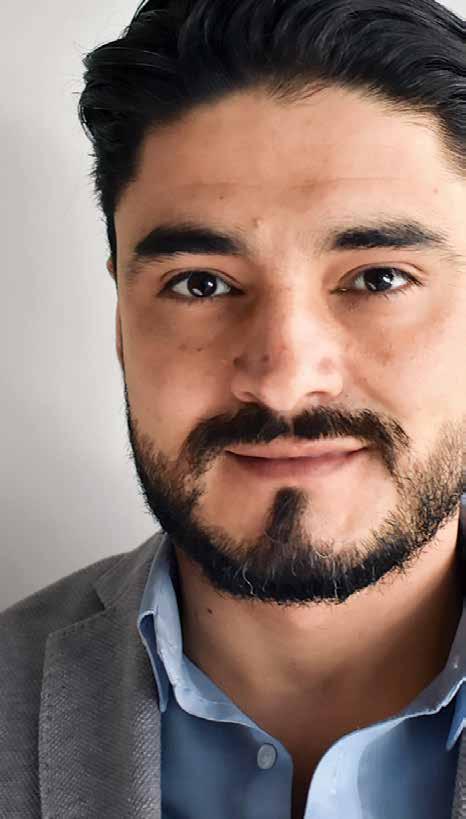
Country Manager of 1DOC3
Digital Health Must Be as Trusted as Traditional Healthcare Provision
Read the complete article
More about this person Q: What added value does 1DOC3 bring to Mexican patients and doctors?
A: The platform went from being a B2C free healthcare forum to a paid interaction with medical professionals with a teleconsulting option within the platform. We are focusing on teleconsultations and medical orientation. In the case of Mexico, we work closely with insurance companies like MAPFRE. Its telemedicine service is provided by 1DOC3 through a white label service. In other countries, such as Colombia, we work alongside the government. In Mexico, our approach is to work with multinational institutions such as the Inter-American Development Bank, which supports us with the financing of some telemedicine projects that are executed by 1DOC3 alongside different health ministries.
Q: How has COVID-19 impacted 1DOC3?
A: 1DOC3 offered clients the chance to see how their employees were doing despite working from home, even in different states. Mental health is another subject that has received a great deal of attention. 1DOC3 already offered consultations for stress or anxiety. However, the increase in these services has been exponential.
Q: What challenges has 1DOC3 faced in Mexico to grow its presence?
A: 1DOC3 offers basic primary attention so most of our doctors are general practitioners. They are open and used to technology, very flexible and have successfully adapted to the digital offering. The challenge is that we have many doctors wanting to participate. However, it would not be efficient to have a surplus.
Q: How has 1DOC3 used the information gathered in Mexico to generate a positive impact?
A: In 2018, we supported IMCO with its yearly diabetes report on understanding how patients behaved and how this compared to other countries with less diabetes incidence. We found that Mexican patients learn about the disease only after presenting symptoms, leading to severe healthcare complications.
Q: How does 1DOC3 protect itself from cybersecurity threats?
A: 1DOC3 has high cybersecurity standards and we use the HIPAA quality model to protect our data. This helps us guarantee that user data is safe and protected. This is an obligation for any telemedicine provider. However, the norms in Latin America are not there yet, which is why we are following other models used in different countries.
Q: What are the near-term plans for 1DOC3?
A: We want to strengthen our market position in Mexico as this is still a very attractive market for us. Mexico’s population is among the leading out-of-pocket spenders in healthcare, which means our services can be adapted easily. We want to continue investing in our data. Thanks to our tools, we are able to visualize what is affecting the population. We can also know what medicines they take and other information that enable us to build AI that better understands symptoms to then offer improved care.
Gino Scarangella
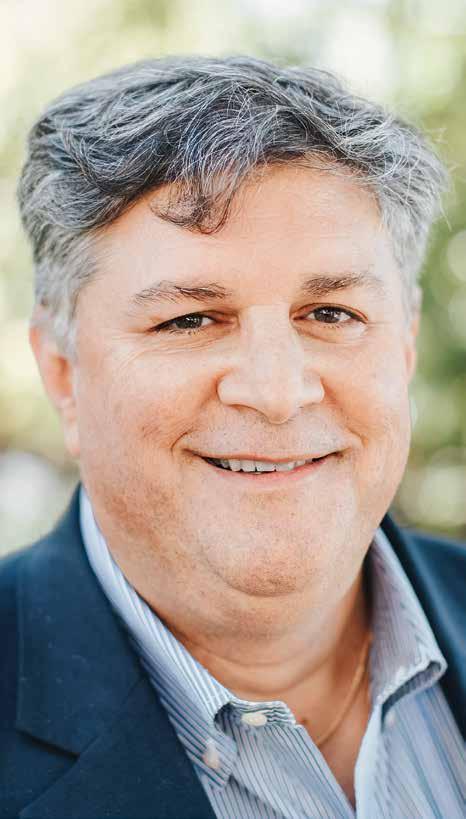
Vice President Life Sciences LATAM of Dassault Systèmes
Business Solutions Through the Smart Use of Data
Read the complete article
More about this person Q: How does the company bring technology and innovation to pharma and biotechnology companies?
A: Dassault Systèmes views life sciences in three significant sectors: pharma and biotechnology, medical devices, and patient care. With our recent acquisition of Medidata in October of 2019 we really expanded our capacity, which allowed us to focus on this new market.
Dassault Systèmes has the capacity to break down barriers currently blocking companies because of the siloed solutions that have been deployed for so many years, by leveraging a platform architecture that connects applications so they may share data across the spectrum of the different work cycles within life sciences. This allows companies to take advantage of data flow across the entire business to increase productivity and reduce the time from ideation to actual production. This eventually leads to a drop in R&D costs and a much faster delivery of therapies to patients.
With pharmaceutical companies, it is common to have sufficient data collected throughout the years across many projects, and yet companies find themselves redoing many of the experiments they have done because they cannot access all the information gathered and stored. Our task here is to enable them to access that data and show them how, through technology, they can continuously improve their processes and performance through better data access and collaboration.
Q: How is your 3DExperience solution a differentiator for Dassault Systèmes?
A: 3DEXPERIENCE connects the company’s different work streams, across business operations and transforms them into a unified engine, focused on reaching the company’s goals. It enables the sharing of all relevant information, whether it relates to the manufacturing process or R&D data, and increases its value by being accessible and useful to the people that leverage it.
Q: How are Dassault Systèmes digital tools helping to grow healthcare access?
A: We have a very successful example in our Living Heart project. Through this solution, companies can create a simulation of an individual’s heart and then look for positive treatments. Medical devices companies use this to make sure their products work as designed. For the medical professional that is actually performing the work, this solution may enable them to take the data collected from the patient and project it into the Living Heart system. This could allow Surgeons to use a heart model driven by the data from their patient to practice before the actual surgery.
Dassault Systèmes also has a Living Brain project that delivers a simulation of the brain and also allows surgical simulations for medical professionals, or even determining the efficacy a drug has getting past the blood brain barrier. With the participation of more companies, we could even develop full body projects to ensure a safer performance for the medical professional and the patient.





